Research Groups
Interconnected groups
PTI-TRANSENER+ is composed of 46 research groups that work together in the development of new technologies to achieve a transition towards a model in which renewables (and in particular hydrogen) contribute to the total decarbonization of the energy system. The members of PTI-TRANSENER+ belong to the following reference research centres:
Institute of Carbon Science and Technology (INCAR)
Institute of Materials Science of Barcelona (ICMAB)
Institute of Carbochemistry (ICB)
Institute of Robotics and Industrial Informatics (IRII)
Institute of Chemical Technology (ITQ)
Institute of Polymer Science and Technology (ICTP)
Institute of Materials Science of Madrid (ICMM)
Institute of Catalysis and Petroleochemistry (ICP)
Center for Biological Research Margarita Salas (CIB)
Institute of Nanoscience and Materials of Aragon (INMA)
Institute of Materials Science of Seville (ICMS)
Institute of Ceramics and Glass (ICV)
Institute of Microelectronics of Madrid (IMM-CNM)
Institute of Microelectronics of Barcelona (IMB-CNM)
National Center for Metallurgical Research (CENIM)
Rocasolano Institute of Physical Chemistry (IQFR)
Chemical Research Institute (IIQ)
Institute of Fundamental Physics (IFP)
Mediterranean Institute for Advanced Studies (IMEDEA) (CSIC-UIB)
Research Center in Nanomaterials and Nanotechnology (CINN)
Geosciences Barcelona (GEO3BCN)
INSTITUTE OF CARBON SCIENCE AND TECHNOLOGY (INCAR)

Composite Materials Group
The activity of this group covers the preparation and processing of carbon precursors and materials (graphenes, activated carbons, carbon fibers, composites and synthetic graphites) from coal and petroleum derivatives.
The group participates in the initiative to develop a vanadium redox flow battery demonstrator (50kW).
CO2 Capture Group
The CO2 Capture group is specialized in CO2 separation processes using CaO as regenerative sorbent (carbonation-calcination or “calcium looping” processes). It also investigates other high temperature reversible reactions applicable to energy storage processes, hydrogen production (CO2 absorption assisted reforming), and acid gas removal processes with calcium sorbents.
The group is leading the Calcium looping technology demonstration initiative.
Carbon Materials Group
The Carbon Materials Group has a long history in the field of carbon materials, encompassing both fundamental and application-oriented research.
At present, the core of the group’s activity is carried out in the context of two main thematic lines: (1) porous carbon materials prepared by different techniques, including nanomolding and hydrothermal carbonization, paying special attention to the use as biomass waste precursors, thus addressing energy storage + sustainable management favoring decarbonization; and (2) graphenes and other two-dimensional (2D) materials, obtained both by colloidal routes and by novel electrochemical exfoliation routes to exert precise control of the morphological, structural and chemical characteristics of the materials. The development of both types of materials is mainly oriented to their use in energy applications, to a greater extent their use as electrodes for electrochemical energy storage (supercapacitors, ionic-Zn hybrid capacitors, Na/air batteries) and as adsorbents of gases such as hydrogen, carbon dioxide and methane.
INSTITUTE OF MATERIALS SCIENCE OF BARCELONA (ICMAB)
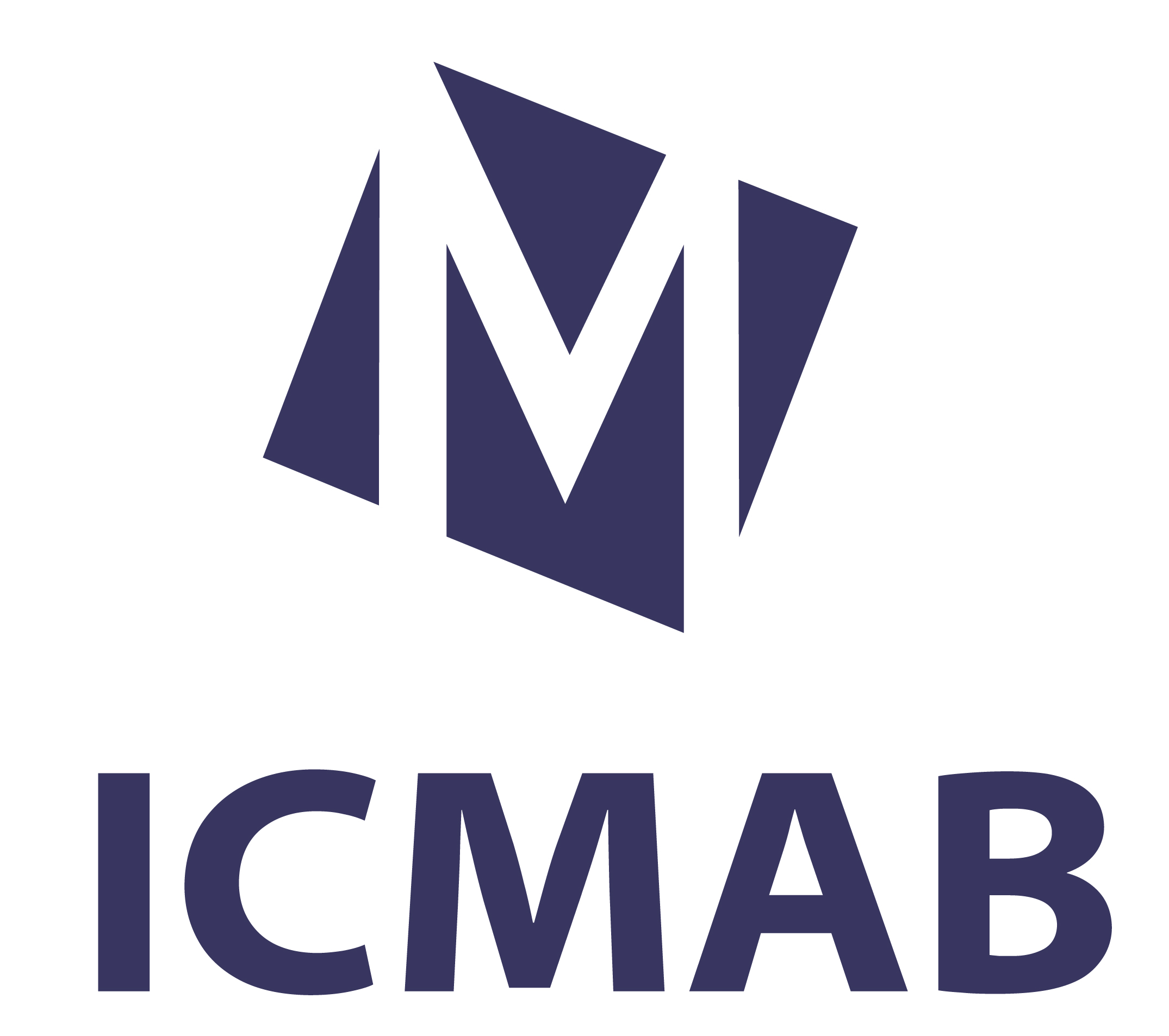
Solid State Chemistry Group
Interdisciplinary research group that focuses its research on solid state transformations and processes leading to new hybrid inorganic, polymeric, nanocarbon and nanostructured materials with direct applications in energy, electronics and biomedicine. The group has, among others, the following research lines: Electrochemistry and electroactive materials; inorganic materials for battery applications; Carbon Nanoengineering and Inorganic Materials and Nanostructured interfaces for electrochemical energy storage.
This group participates in the initiative Development of a vanadium redox flow battery demonstrator (50 kW) and in the construction of the infrastructure Test bench using synchrotron radiation for green energy applications: superconducting materials, electrochemical storage and catalysis.
Superconducting Materials and Large Scale nanostructures
The Superconducting Materials and Large Scale nanostructures Group focuses its research on the study of nanostructured functional oxides grown through chemical solutions. The major effort is on superconducting materials, including high-yield growth methods for films, nanocomposites and ribbons, ink-print deposition and combinatorial approaches, search for new vortex anchoring mechanisms and their correlation with defect structure. They promote initiatives to adapt the tapes and advanced characterization for their integration in large-scale applications. In addition, they dedicate a special interest to strongly correlated functional oxides, especially cuprate, ferromagnetic and ferroelectric films, for new functionalities associated with the control of superconducting transitions and spin texture manipulation for electronic devices, and ferroelectric oxides for applications in photovoltaics.
This group participates in the construction of the Test Bank infrastructure using synchrotron radiation for applications in green energy: superconducting materials, electrochemical storage and catalysis.
INSTITUTE OF CARBOCHEMISTRY (ICB)
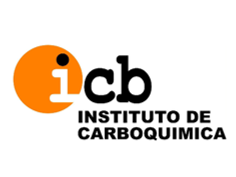
Laboratory For Research In Fluid Dynamics And Combustion Technologies (LIFTEC)
LIFTEC is dedicated to the study of phenomena related to Fluid Mechanics, with particular interest in the lines of research in fluid engineering and fuel cells. The center has established itself as a reference center at national and even international level in the lines of research in which it works and has facilities and pilot plants, which can be classified in the category of “singular facilities”.
LIFTEC participates in the following initiatives: Renewable Hydrogen Generator 60 kg H2/day, Development of a vanadium redox flow battery demonstrator (50 kW), Implementation of a 5KW water electrolyzer with anion exchange polymeric membrane and in the development of the PEM Test Bench infrastructure.
Fuel Conversion Group
The activity of the group is currently focused on the production of hydrogen and synthesis gas by valorization of natural gas and biogas, in the preparation and characterization of nanostructured carbon materials with applications in the fields of energy and environment as well as in the control of pollutants emitted into the atmosphere (NOx and soot).
The group participates in the following initiatives: Biorefinery demonstration of agricultural waste, Development of a vanadium redox flow battery demonstrator (50 kW) and Implementation of a 5KW water electrolyzer with anion exchange polymeric membrane.
Combustion and gasification group
The research group develops processes for the energetic and chemical utilization of biomass and renewable fuels such as bioethanol, glycerin, bio-oil and livestock slurry using solid oxygen carriers.
The combustion and gasification group is currently working on the following lines of research:
- Energy generation by biomass and waste combustion with negative CO2 emissions (Chemical Looping Combustion).
- Production of synthesis gas/H2 by gasification of biomass waste (Chemical Looping Gasification).
Auto-thermal reforming with oxygen carriers (Chemical Looping Reforming) to obtain synthesis gas/H2 from renewable fuels (biogas, bioethanol, glycerin, bio-oil).
Carbon Nanostructures and Nanotechnology Group
The multidisciplinary Carbon Nanostructures and Nanotechnology Group (GCNN) combines basic research with technological development. This group has extensive experience in the development of functional materials based on carbon nanostructures and hybrid materials with conductive polymers, metal oxides, 2D metal dichalcogenides, nanocellulose, among others, for applications in the areas of energy, catalysis, and sensors.
Currently, in the context of efficient energy storage and hydrogen production, the group is working on the following lines of research:
- Development of green hydrogen production system by photoelectrochemical water splitting.
- Development of photo-electrodes in the form of films from dispersions of new hybrid photoelectroactive nanomaterials.
- Efficient storage of electricity or renewable H2 in the form of hydrocarbons (methane, formic acid) and CO2 utilization. Monolithic catalysts supported on metal oxides for CO2 capture and conversion into hydrocarbons.
- Development of 3D structures based on carbon nanomaterials for energy storage (supercapacitors, batteries): graphene aerogels, porous structures derived from biomass, with and without doping with heteroatoms (N, P, S).
Environmental Research Group
The Environmental Research Group is a multidisciplinary group that researches in the areas of energy and the environment with the ultimate goal of contributing to sustainable development. The research lines developed by the group can be summarized as follows:
- Chemical processes for the circular economy: pyrolysis of end-of-life tyres and pyrolysis of plastics.
- Gasification: production of syngas through improved gasification.
- Production of renewable energy carriers. Hydrogen and syngas (methanation and cold plasma).
The group participates in the following initiative: Biorefinery demonstration of agricultural residues
INSTITUTE OF ROBOTICS AND INDUSTRIAL INFORMATICS (IRII)

Automatic Control Group
Develops basic and applied research in automatic control, with special emphasis on:
- modeling, control and supervision of nonlinear, complex and large-scale networked systems.
- Design and implementation of decision support tools for resource management systems with multiple and heterogeneous constraints.
- Real-time control, fault diagnosis and fault tolerance.
The group has acquired specific experience in the application of advanced control techniques to environmental resource management, specifically in the fields of water and energy.
The group participates in the initiative Development of a vanadium redox flow battery demonstrator (50 kW), Renewable hydrogenerator 60 kg H2/day.
INSTITUTE OF CHEMICAL TECHNOLOGY (ITQ)
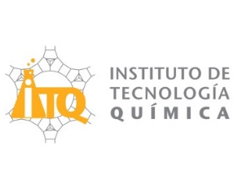
Renewable and Fossil Energy Conversion and Storage Group
This research group focuses its activity on the development of new solutions that contribute to the reduction of greenhouse gas emissions, to the increase of efficiency in energy production and chemical industry and to the development of reasonable ways of storing surplus electrical energy.
This research group leads the Oxycombustion-OxyH2 Demonstration Platform initiative and the construction of the SOEC electrolyzer test bench infrastructure and participates in the initiatives Development of a vanadium redox flow battery demonstrator (50 kW) and Biorefinery demonstration of agricultural waste.
Selective Activation and Small Molecule Valorization Group
This research group focuses its activity on the fundamental study, rational design and optimization of solid catalysts capable of selectively activating and converting small recalcitrant and multi-bonded molecules, such as CH4, CO, CO2 and N2, into value-added (petro)chemical compounds.
This research group participates in the construction of the test bed infrastructure in Alba.
Molecular Catalyst Design Group
The research group works on the design and synthesis of mono and multifunctional catalysts with well defined and homogeneous active centers. Characterization by spectroscopy and probe molecules. Reactivity in chemical processes, characterized by single or multi-step (cascade reactions).
This research group participates in the construction of the test bench infrastructure in Alba and in the Biorefinery Demonstration initiative.
Syngas Group
This research group works on the development of advanced catalysts for synthesis gas (syngas) conversion processes to ultra-clean fuels and base chemicals.
This research group participates in the Biorefinery Demonstration initiative.
Nanomaterials for Photonics, Optoelectronics and Energy
The Nanomaterials group of ITQ-CSIC is a multidisciplinary research group whose research is oriented to the synthesis and processing of new nanomaterials with application in the field of photonics, optoelectronics and energy, combining materials synthesis, photophysical and electronic studies and their implementation in devices and electrodes.
The group’s experience is well consolidated in the development and study of properties of materials based on (i) silicon for multiple applications in different technological fields: photonics, medicine and cosmetics; and (ii) hybrid perovskites of great interest in solar energy and photonics. Recently, they have participated in the development of highly sensitive sensor devices for monitoring atmospheric pollutants. In recent years, the research scope of the group has expanded with the incorporation of materials based on transition metal clusters with applications in the energy field. Specifically, in transformations of interest for energy and environmental use, such as obtaining H2 from sunlight and water.
INSTITUTE OF POLYMER SCIENCE AND TECHNOLOGY (ICTP)
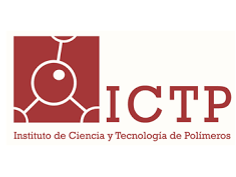
Polymer Composites Group
This research group has extensive experience in the development of polymeric (nano)composite materials with industrial applications. At present, and in the context of large-scale energy storage, the following lines of research are being developed:
- Improvement of electrolyte and electrode transport properties in vanadium redox flow batteries.
- Development of advanced, economical and safe polymer electrolytes with high energy and power density for rechargeable aqueous redox flow batteries.
- Synthesis of redox conducting polymers
- Development and application of advanced characterization tools for the study of the energy storage mechanism in batteries and supercapacitors.
The group participates in the development of a vanadium redox flow battery demonstrator (50kW).
Energy Applications Group
The group’s activity is carried out in the field of conductive polymers and their application in energy generation and storage devices (polymeric membrane fuel cells, PEMFC), electrochemical capacitors and metal-ion (M=Li, Na, K). The group has the equipment infrastructure required for the synthesis and characterization (morphological, electrochemical) of the developed materials.
Physical Chemistry of Heterogeneous Polymer Systems (HEMPOL)
In the group, based on strict control of components and interfaces, new heterogeneous polymer-based materials are designed and developed with applications in fields as diverse as energy, construction or the environment, always researching new sustainable and scalable procedures.
To achieve these objectives, micro and nanometric organic and inorganic particles are modified in order to provide them with ad hoc functionality, for example for their use as Pickering emulsifiers that allow the stabilization of microphases, or as a solid physical crosslinker, as a mechanical reinforcement, or to provide thermal stability, optical or other properties.
INSTITUTE OF MATERIALS SCIENCE OF MADRID (ICMM)

Bioinspired Materials Group
This research group with more than 20 years of experience in the field of energy storage and generation, focuses its activity on the design, preparation, physicochemical and electrochemical characterization of eutectic mixtures and aqueous solutions for use as electrolytes in energy storage systems (both redox and capacitive), with the aim of improving their efficiency, stability and cyclability, as well as to facilitate future scale-up.
This group participates in the initiative to develop a vanadium redox flow battery demonstrator (50kW).
Energy Conversion and Storage Group
The group is involved in the preparation and characterization of energy-related materials. This includes materials for Li/Na batteries; materials for solid oxide fuel cells (SOFC), cathodes, anodes and electrolytes; materials for supercapacitors; materials for energy storage (metal hydrides); thermoelectric materials for energy harvesting (chalcogenides and pnicthides); materials for solar energy harvesting (hybrid perovskites). After synthesis, structural characterization by neutron techniques, synchrotron X-ray diffraction, X-ray absorption etc. is a priority, in order to establish relationships between structure and properties. In addition to the characterization of the properties of interest, the materials are tested in prototypes (SOFC single cells, Li, Na button cells, supercapacitor cells) and their electrochemical characteristics are evaluated.
Group of Heterostructures for Optics, Optoelectronics and Coatings
The objectives are focused on exploring, obtaining, studying and optimizing new materials: thin films and heterostructures, 2D materials (graphene and transition metal chalcogenides), 0D nanostructures, for innovative applications in optoelectronics (optical detection and imaging, PV, LEDs) and in magnetocaloric and thermoelectric systems.
On the other hand, at the most applied level is the improvement of coatings for the management of solar thermal energy, of transparent electrodes and of electrodes in electrolysers for the generation of hydrogen.
INSTITUTE OF CATALYSIS AND PETROLEOCHEMISTRY (ICP)
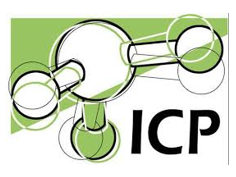
Energy and Sustainable Chemistry Group
This group develops its research activity in the areas of energy, chemistry and chemical technology, and specifically in synthesis and structure of heterogeneous and organometallic catalysts, in chemical and energy processes, and in the engineering and optimization of catalytic systems involved in these processes. The main fields of interest and research and development activity are: energy, new clean catalytic processes and environment.
The group participates in the Biorefinery Biorefinery Demonstration initiative.
Electrocatalysis for Energy and the Environment Group
The research work of the Electrocatalysis for Energy and Environment Group is dedicated to the development of advanced catalysts for energy and environmental applications that minimize the environmental impact derived from the use of fossil fuels. Its activity is focused on the development of nanostructured electrocatalysts that favor the necessary and essential improvement of the activity and stability of electrodes in electrochemical devices for storage and production of clean energy, mainly in those applications that use hydrogen as an energy vector such as fuel cells, electrolyzers and regenerative cells in a unit.
The group participates in the initiative of Implementation of a 5KW water electrolyzer with polymeric anion exchange membrane.
CO2 Conversion and Circular Chemistry Group
The group carries out experimental studies in catalysis and chemical processes, related to the environment and energy, from basic to applied or technological research. The main themes that unify this broad area are: (1) The development of new processes that convert waste streams into chemical compounds, fuels and other products, considering waste as a resource (2) The use of renewable energy sources.
The research aims to understand the key parameters that control reactivity and selectivity, following a rational design strategy to optimize catalysts. Its dynamic evolution during the reaction will continue using characterization techniques in-situ and operating, to facilitate its evaluation.
Heterogeneous Catalysis and Advanced Characterization Techniques Group
The Heterogeneous Catalysis and Advanced Characterization Techniques Group was created in 2016 with the main objective of conducting high-quality investigations of heterogeneous catalysts and related systems under realistic conditions, mainly in operating conditions but also in situ, combining various spectroscopic techniques, with special emphasis on those associated with synchrotron radiation. In addition to more basic aspects, the research carried out by the CHYTAC group is oriented towards solving societal challenges and good proof of this are its recent collaborations with the industrial sector (Haldor Topsøe, Fertiberia, Repsol, Iberdrola…).
CENTER FOR BIOLOGICAL RESEARCH MARGARITA SALAS (CIB)

Microbial Systems and Protein Engineering Group
This group contributes with its activity to the establishment of clean bioprocesses based on the use of secondary raw materials such as agro-industrial waste and plastics for sustainable development. Its research aims to reduce the consumption of fossil resources and global warming, to the development of clean and non-polluting bioprocesses, and to the use and reuse of waste in accordance with the concepts of biorefinery and circular economy.
The group participates in the Biorefinery Demonstration of Agricultural Waste initiative.
INSTITUTE OF NANOSCIENCE AND MATERIALS OF ARAGON (INMA)
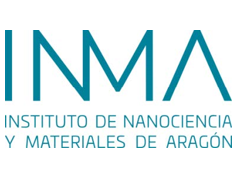
Processing and Characterization of Structural and Functional Ceramics Group (PROCACEF)
The group is focused on the research and development of Structural and Functional Ceramics for Energy Applications and their Devices. In particular in ceramics with mechanical performance, functional ceramics for electrochemical applications and their devices, functional materials based on directionally solidified eutectics and laser assisted processing of ceramics and other materials.
This group leads the SOEC High Temperature Electrolyzer Development initiative.
Multifunctional Magnetic Molecular Materials Group (M4)
M4 is a multidisciplinary research group that deals with the preparation and study of multifunctional magnetic molecular materials, encompassing its research activity in Molecular Nanoscience with interest in digitization technologies, energy and biomedicine.
Preferential attention deserves the characterization of the prepared materials. For this purpose, the group has a series of techniques in which it is a reference for other national and foreign groups. These techniques in which the members of the group have acquired international prestige are neutron and X-ray scattering, magnetic and thermal techniques.
The M4 group has a long tradition in the development of advanced scientific instrumentation and coordinates access to Spanish neutron diffractometers at the ILL exclusively for the Spanish community (spins.unizar.es). He is currently leading the design and construction of XtremeD, a new neutron diffractometer for measurements under extreme conditions of temperature, magnetic field and pressure, which will be a world reference. This instrument, due to its ability to operate with sub-millimeter samples, will also allow “in situ” and “in operando” diffraction experiments on real batteries of any type.
Currently, in the context of efficient energy storage, the group is working on experimental characterization techniques in large facilities (synchrotrons and neutron sources) in the design of “in operation” experiments (structural mapping, imaging, tomography, etc…) on all types of batteries and at any scale.
INSTITUTE OF MATERIALS SCIENCE OF SEVILLA (ICMS)
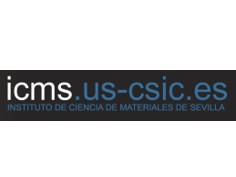
Tribology and Surface Protection group
The Tribology and Surface Protection group is dedicated to the development of nanostructured layers prepared by plasma technology to improve the performance of materials under severe conditions of wear, oxidation or temperature. In parallel, it works on microstructural and chemical characterization, mainly at the nanoscale, by means of microscopy and advanced spectroscopy techniques that allow the custom synthesis of these materials and the optimization of their functional properties for the intended applications.
Currently, the group is working on the implementation of HIPIMS sputtering technology for the preparation of protective coatings for the energy sectors, specifically, the development of coatings for selective solar absorption in concentrating solar collectors.
Surface Chemistry and Catalysis Group
SURFCAT is a long-standing and internationally renowned research group in the field of heterogeneous catalysis. The group has focused its efforts on the development of efficient catalysts for energy and environmental processes such as CO2 conversion, VOC removal, biofuel production and hydrogen production for fuel processors. In addition, the group is pioneering the development of microchannel structured reactor technology for process intensification and the application of operating spectroscopy for reaction monitoring and reaction mechanism studies.
Recent interests of the group are focused on the decarbonization of the industrial and transport sector through the development of innovative technologies for CO2 capture and conversion as well as production of next generation biofuels for heavy transport.
Surface and Plasma Nanotechnology Group
The Surface and Plasma Nanotechnology group is an interdisciplinary group whose research lines are articulated around the intelligent processing of surfaces and surface nanostructures, mainly using vacuum and plasma methodologies. Through these procedures the group develops materials, components and processes “a la carte” for various applications in different fields, mainly in the fields of energy and environment.
Examples of this activity are the development of systems such as microfluidic, photonic or electrochemical-based sensors, photovoltaic cells, surfaces and membranes with selective response to liquid wetting and ice formation, fuel cells and cells for water electrolysis, nanogenerators and environmental energy collectors, electroacoustic devices to limit ice formation, or plasma-catalysis reactors for various gas-phase processes. In the energy field, it is worth mentioning the execution of several projects on hydrogen generation by electrolysis, hydrocarbon reforming and ammonia decomposition by means of cold plasmas, visual hydrogen detection by means of optical sensors, the manufacture of state-of-the-art photovoltaic cells, the development of coatings for intelligent windows, or systems for capturing environmental energy or for frost protection in wind turbines and photovoltaic panels.
Solid Reactivity Group
The group’s activity is mainly focused on studies of reactivity of solids, including solid-gas reactions, in the development and characterization of thermochemical energy storage systems, mechanosynthesis and synthesis and preparation of ceramic materials using electric current/field assisted techniques. Finally, the group is an international benchmark in the development of methods for the kinetic analysis of solid-state reactions.
Among others, the current lines of research of the group are the following:
1) Development and characterization of materials based on CaO for their application in thermochemical storage systems of solar energy
2) Extension of the innovative technique of Flash Sintering and Reactive Flash Sintering for the preparation of ceramic materials with application in energy storage and production (capacitors, batteries, catalytic systems)
INSTITUTE OF CERAMICS AND GLASS (ICV)
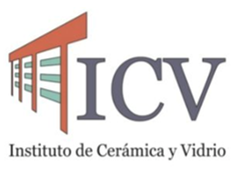
Electrochemical Applications of Materials group
The ELAMAT group has more than 15 years’ experience in the study of electrochemical processes related to energy and environmental applications, with special interest in hydrogen technologies. Activities include the synthesis and characterisation of inorganic materials adopted in electrochemical devices, with the goal of optimising electrical and electrochemical performance. The group has considerable experience of materials processing using alternative methods, as well as the analysis of physicochemical properties through structural studies, defect chemistry and the application of advanced methodologies for determination of electronic and ionic transport. The group also undertakes the design, fabrication and characterisation of single cell fuel cells and electrolysers based on ceramic oxide-ion conductors (SOFCs, SOECs), ceramic proton conductors (PCFCs, PCECs) and polymeric proton conductors (PEMFC).
Technical ceramics group
The group’s activity is mainly focused on the design and development through additive manufacturing of complex 3D structures based on ceramic materials and carbon structures, being one of the first groups in Spain to use direct ink printing technology (known as robocasting). These 3D printed materials are being researched within the group in the energy and environmental fields. In the first one, through the development of materials for the storage of thermal energy in concentrated solar energy applications, hydrogen production through the catalytic dehydrogenation of biodegradable organic materials, and nanofiber-reinforced ceramic electrolytes for solid-state batteries. Regarding environmental applications, work is being done on the elimination of contaminants in wastewater and the synthesis of high value-added chemical products with 3D catalysts.
INSTITUTE OF MICROELECTRONICS OF MADRID (IMM-CNM)
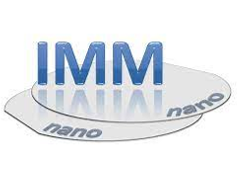
MBE Group: Quantum Nanostructures for Optoelectronics
The MBE group was the first group in Spain dedicated to III-V materials, which are the basis of modern optoelectronics (LED diodes, semiconductor lasers, photodetectors, and photovoltaic multi-junctions). The group has been engaged, in chronological order, in the following lines: development of new epitaxy techniques, lasers, semiconductor nanostructures, single photon emitters, and photovoltaic technology. The group works in close collaboration with the Solar Energy Institute (IES-UPM), participating continuously in joint projects focused on photovoltaic technology.
MICROELECTRONICS INSTITUTE OF BARCELONA (IMB-CNM)

Power Devices and Systems Group (PDS)
The IMB-CNM Power Devices and Systems Group focuses its activity on the design, fabrication and characterization of optimal and robust semiconductor devices and power systems. These devices are the core of power converters present in many areas of society, from cell phone chargers, household appliances, electric cars… to wind turbines, smart grids, railway traction, etc… One of the main objectives of the group is to make these converters as energy efficient as possible. For this purpose, we make use of a wide knowledge of the device physics (based on different semiconductor technologies such as Silicon, SiC, GaN, GaO, Diamond…) and its integration in a power system by analysing its thermal behaviour, studying new encapsulation techniques and using advanced characterization techniques to study its reliability and robustness. The IMB-CNM has a Micro and Nano fabrication Clean Room considered ICTS (Singular Scientific-Technical Infrastructure) that allows the fabrication of all types of power devices from very low voltage protection diodes (>5V) to very high voltage IGBTs (6.5 kV).
NATIONAL CENTER FOR METALLURGICAL RESEARCH (CENIM)
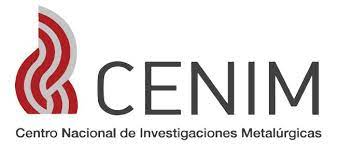
Corrosion and Protection of metallic materials (COPROMAT)
COPROMAT group develops basic research to understand the corrosion mechanisms responsible for the degradation of metals in their working environment. The group studies both thermodynamic and kinetic aspects of the different phenomena taking place at the metal/electrolyte interface, in order to discriminate and understand the elementary processes involved. This is especially relevant in mechanically assisted corrosion processes (tribocorrosion, environmentally induced cracking, hydrogen embrittlement, stress corrosion cracking), where synergistic effects appear between purely electrochemical and mechanical factors that can contribute to accelerate or attenuate the degradation of metallic materials.
The interaction of hydrogen with metallic materials (steels, aluminum alloys, …) has detrimental effects on their mechanical properties, thus conditioning the service life of storage vessels, valves or fuel tanks. Since the mechanisms responsible, at the atomic scale, for this embrittlement are still quite unknown, there is hardly any margin for predicting the durability and service life of the materials in contact with it.
In this sense, the experience of the group allows not only to deepen the knowledge of the degradation process of the material but also the necessary knowledge to develop new protection systems that contribute to improve the behavior in service, to extend its useful life and even to provide the surfaces with new properties and functionalities.
Solid State Phase Transformations Group (METERALIA)
Currently, the MATERALIA Group maintains a leading position at Spanish level and an important visibility at international level in the field of phase transformations in steels. Its main objective is to understand the relationship between processing, steel structure and its mechanical properties. To this end, he delves into the transformation mechanisms, characterizes the structure of the material from the micro to the nano-scale and develops simulation tools that allow him to describe the physics and chemistry that govern the transformation processes of steel and its properties under real conditions of use.
In the context of industrial decarbonization, the scientific objectives of the group are:
- To help the steel industry to address the decarbonization of the sector in the context of circular economy, driving an economy based on hydrogen, energy efficiency and electrification (Figure 1).
- Promote additive manufacturing, a smart and sustainable way to manufacture material components and structures for energy applications.
- Develop new materials resistant to high temperatures and aggressive environments to increase the efficiency of energy production systems with low CO2 emissions.
- Develop advanced ultra-high-strength steels for bearings and gearboxes for wind turbines.
Eco-Innovative Technologies Group applied to environmental processes, recycling of materials and energy use (TECNOECO)
Research group dedicated to the study of the recovery, recycling, reuse of materials and obtaining critical metals for the energy transition. Our activity has a marked transversal character, collaborating with companies through the development of new processes and technologies and at the same time, contributing to the scientific development in the field of specialty of the Group, through the realization of competitive projects both national and international.
At present, the Group is working in the following research lines:
- ENERGY: Application of H2 in the iron and steel industry both as an energy vector and as a reductant; development of new materials for biogas and synthesis gas cleaning; applications of carbonaceous materials for energy storage; recycling of materials from electric vehicles
- CRITICAL RAW MATERIALS: treatment of mining resources and tailings; use of post-consumer products; application of nano-based technologies
ROCASOLANO INSTITUTE OF PHYSICAL CHEMISTRY (IQFR)
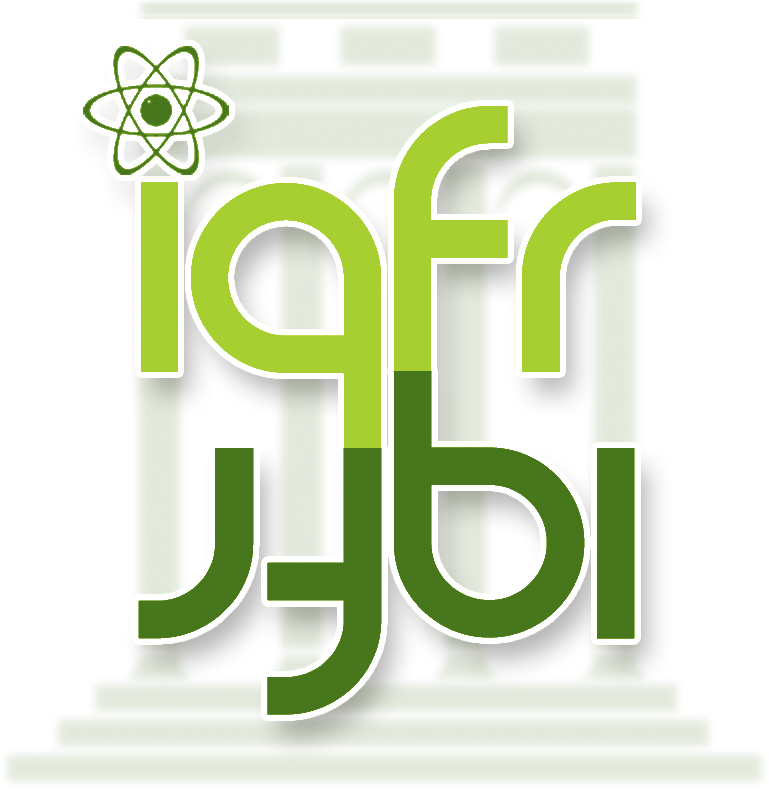
Materials for Energy and Photonics
The MatEF group is the result of the combination of researchers from two IQFR groups (Lasers, Nanostructures and Materials Processing -LANAMAP- and the Statistical Mechanics and Condensed Matter group -SMCM-).
The group focuses its activity, on the one hand, on the study of laser-induced processes, with a double fundamental (description and understanding of the mechanisms) and applied (search for strategies for the control of laser fabrication towards certain functionalities, with special interest in the nanostructure), and, on the other hand, in the modeling of systems and processes induced by lasers, with a special interest in nanostructures, in the modeling of systems and processes in materials of photonic interest (colloidal crystals and quasi-crystals) and confined systems of energetic interest (selective adsorption processes of bioalcohols, synthesis, characterization and modeling of porous carbonaceous materials, and modeling of double-layer electrolytes for supercapacitors.
In the context of Transener+, the capabilities of laser material transformation at the nanoscale can be applied to the investigation of nanostructured anodes for Li-ion batteries. The group’s modeling capabilities are oriented towards a data-driven design based on both AI techniques for the design of new materials and the selection of the most suitable materials, e.g. in the case of nanostructured anodes maximizing active areas and minimizing tortuosity.
CHEMICAL RESEARCH INSTITUTE (IIQ)

Organometallic Synthesis and Catalytic Applications Group
The Organometallic Synthesis and Catalytic Applications group is internationally recognized for its fundamental studies related to the activation of small molecules by compounds of transition metals from the end of the second and third series of the Periodic Table, a field that has reached a high degree of maturity.
Recently, this group has investigated the application of compounds based on the same metals (and is currently beginning to extend these studies to metals of the first transition series) stabilized with pincer-type ligands as catalysts in reduction (hydrogenation and hydrometallation) and dehydrogenation processes. Likewise, the group has experience in the preparation of noble metal nanoparticles stabilized with organic ligands, which have proven to be very active in different hydrogenation and H2 generation reactions, among others. In this regard, it is interesting to note that hydrogenation and dehydrogenation reactions are of considerable interest in organic synthesis, as well as in the field of energy storage in the form of hydrogen, a key aspect for the development of an economy based on hydrogen as an energy vector.
INSTITUTE OF FUNDAMENTAL PHYSICS (IFP)
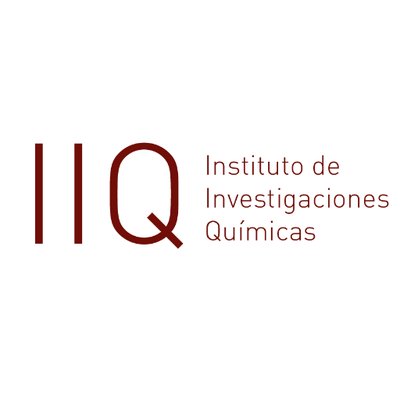
Molecular Interactions Theory and Simulation Group
INTERMOL group focuses on several lines of work that follow a common guideline: obtaining precise molecular interactions that, in a second stage, make it possible to describe various processes such as energy transfer, calculation of reaction constants, as well as the structure of various molecular and nanostructured systems both in the gas phase and at the gas-surface interface.
In recent years, the group’s work has been dedicated, among others, to the theoretical study of various systems that are directly related to a) efficient storage, b) industrial decarbonization, c) hydrogen technologies. These systems involve atomic and molecular species (H, noble gases, H2, CO2, N2, CH4, H2O) and their interaction with carbon-based molecular and two-dimensional systems (PAHs, graphene and its nanoporous derivatives such as graphins).
MEDITERRANEAN INSTITUTE FOR ADVANCED STUDIES (IMEDEA) (CSIC-UIB)

Global Change Research Group
The Global Change Research group conducts interdisciplinary research in geoenergies, hydrology, terrestrial and marine ecology. Global Change driven by human population growth coupled with greater use of resources (energy, water, land, biodiversity, chemicals and key elements) makes research necessary to achieve carbon neutrality.
The topics relevant to the PTI dealt with by the group are geothermal energy (renewable generation), geological carbon storage (industrial decarbonization) and underground hydrogen storage (hydrogen technologies).
RESEARCH CENTER IN NANOMATERIALS AND NANOTECHNOLOGY (CINN)
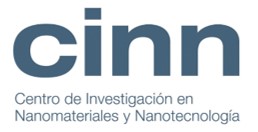
Synthesis and Advanced Characterization of Nanostructured Materials Group
The research group focuses its activity on:
– Synthesis of nanopowders using hydrothermal, coprecipitation and Sol-Gel techniques, including their characterization at both a morphological, structural and textural level.
– Consolidation of nanopowders into dense nanostructured materials and analysis of their physical properties (mechanical, optical, electrical…).
– Precise characterization of the structure of materials using advanced techniques of x-ray diffraction and synchrotron light.
GEOSCIENCES BARCELONA (GEO3BCN)

Geosciences Barcelona (GEO3BCN)
Geosciences Barcelona (GEO3BCN – CSIC) is an international geosciences research institute whose mission is to advance the understanding of Earth System Science. A key part of their mission is to meet industrial and societal needs through knowledge transfer applied to geohazards and exploration and exploitation of geological resources. In the framework of the PTI, the research group focuses its activity on:
– Carbon Capture and Storage
– Underground energy storage
– Carbon Dioxide Removal technologies
– Mineral exploration for the energy transition
– Geothermal energy


